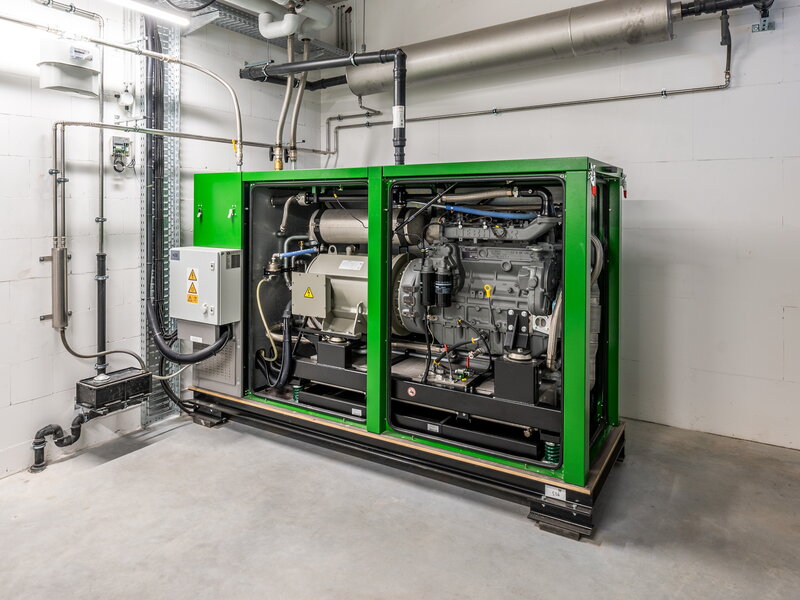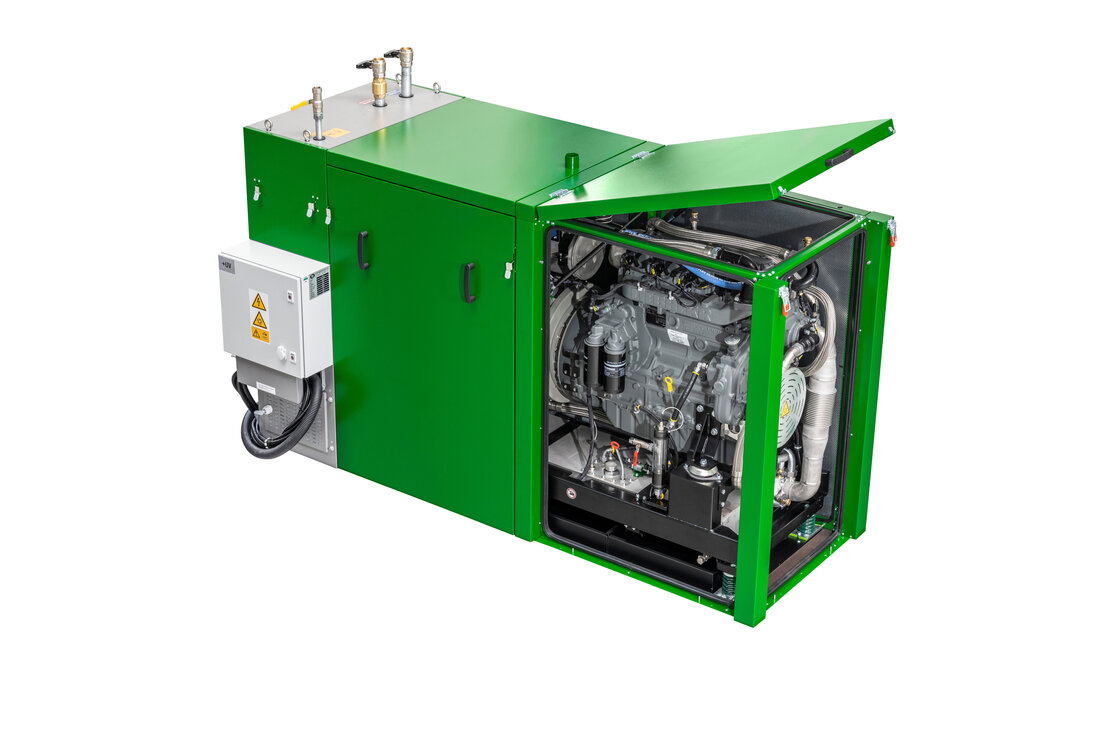La cogénération au biométhane pour la charge de pointe
Faits et chiffres

L'année dernière, l'entreprise a emménagé dans ses nouveaux locaux. Situés dans un parc commercial, les locaux comprennent un immeuble de bureaux de trois étages d'une superficie d'environ 2 400 mètres carrés, ainsi qu'une installation de production et de stockage spacieuse d'une superficie d'environ 2 100 mètres carrés. Environ 120 employés travaillent dans le bâtiment administratif, tandis que 30 autres postes de travail se trouvent dans l'installation de production et de stockage. Après plus d'un an de planification, les fondations ont été posées en décembre 2020 et 13 mois plus tard, le nouveau site était prêt à accueillir ses occupants. PlanET Biogas a investi environ 10 millions d'euros dans le complexe.
Selon l'entreprise, la durabilité est au cœur du concept énergétique du site. Le système énergétique a été intégré au bâtiment de production et de stockage. À côté d'autres machines, on trouve un système miniature de production combinée de chaleur et d'électricité du fabricant de systèmes de cogénération 2G Energy de Heek. Il a une puissance électrique de 50 kW et une puissance thermique de 100 kW. Le système est alimenté par du biométhane produit par une usine de biogaz en Basse-Saxe. Le gaz est acheminé par le réseau de gaz naturel. La cogénération permet principalement d'écrêter les pointes d'électricité et de charge.








Geothermal energy covers most of the demand for heat and cooling
The energy supply concept also includes a photovoltaics system on the roof of the production and storage facility which has an electrical output of 295 kW. The electricity is temporarily stored in Tesvolt batteries with a total storage capacity of 160 kWh. According to the company, the photovoltaics system also supplies nine charging stations on the premises with a total of 18 connectors. “Depending on our internal energy demand, taking peak shaving into account, as well as the use of the charging stations, the energy provided by the photovoltaics system, the charge level of the heat and electricity storages and the weather conditions, the CHP system covers the missing amounts of energy,” explains the company with clear satisfaction.
PlanET Biogas expects that the operation of the of the miniature combined heat and power system will fluctuate between 1,000 and 2,000 annual operating hours. In the first year of operation, although not all systems were in use and the system was held at partial-load operation, it amounted to about 1,600 operating hours. “The 70,000 kWh of electricity that were produced this way were primarily used for our own operation and the charging stations; excess electricity went into the storage batteries. Electricity is only fed into the grid under exceptional circumstances and the thermal energy remains entirely within the operation,” states PlanET Biogas. As part of the energy concept, the buildings are mainly climatized using geothermal heat exchangers.
Heating and cooling of the office building make use of concrete-core activation, also called thermal building component activation. In such systems, water pipes are installed inside the concrete bodies of floors and ceilings. During winter, hot water flows through these pipes, heating the floor while emitting heat into the air inside the office and the production facilities. Sweltering summer days, on the other hand, are made more agreeable by the cooling effect from the ceiling. Pipes much like those of the floor heating system are inside the ceilings to provide cooling from above. The climatization system combines 21 geothermal wells (geothermal heat exchangers), each drilled to a depth of 99 meters and with about eight meters between them. During the heating period, a four-stage heat pump by Waterkotte with an electrical output of approx. 18 kW and a thermal output of about 85 kW transmits the geothermal energy to the storage tanks.
Two engineers, Jörg Meyer zu Strohe and Hendrik Becker, founded the PlanET Biogas Group in 1998. Today, the company counts more than 330 employees. At the start of 2022, the company moved within the Münsterland region from Vreden to Gescher. The company conceives and builds biogas systems with outputs from 75 kW up to 4 MW. The Group has branches in France, the United States, Canada, and Brazil. The company with an annual turnover of more than 120 million Euros is among the market leaders in the biogas sector having, as of today, implemented more than 600 biogas and 80 biomethane systems.




